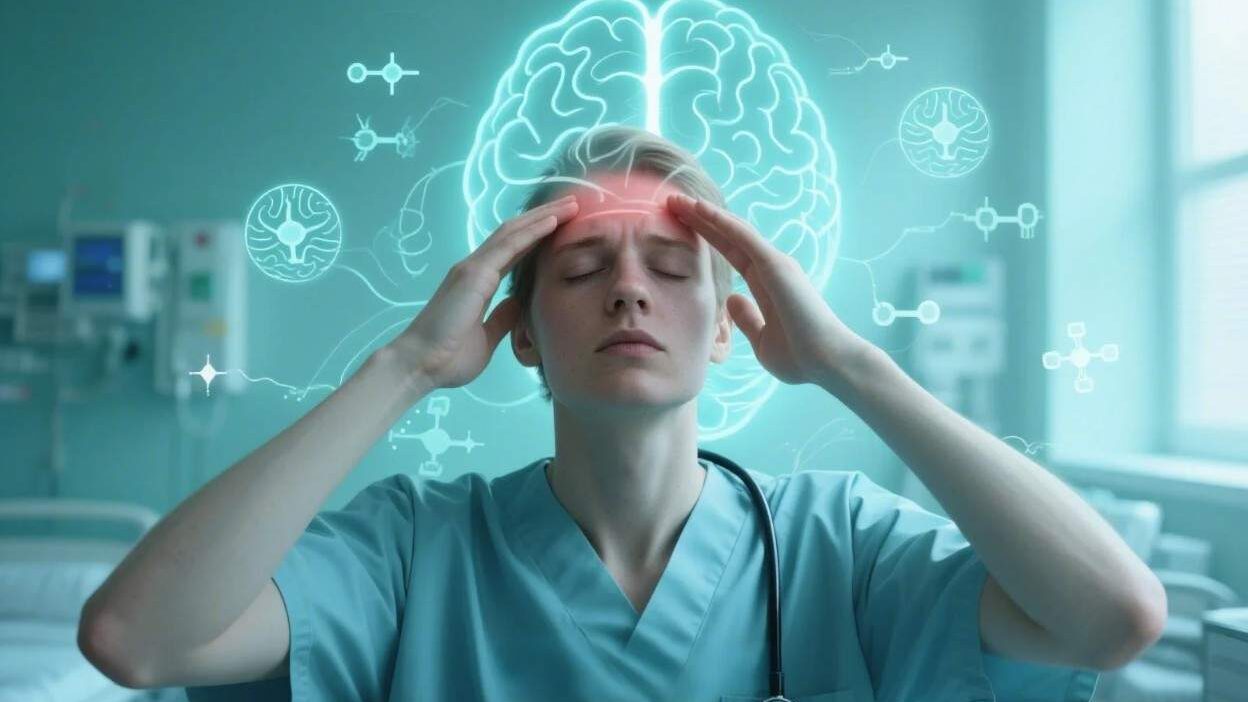Mental Control of Pain: Evidence-Based Approaches to Mind-Body Pain Management
Chronic pain affects approximately 50 million Americans and represents a complex interplay between physical, psychological, and neurological factors. This review examines evidence-based mental techniques for pain control, drawing from contemporary research in biopsychosocial pain management. The literature demonstrates that mind-body interventions can significantly reduce pain perception and improve quality of life through neuroplastic changes and psychological coping mechanisms. Key approaches include deep breathing, meditation, cognitive behavioral therapy, mindfulness, and various relaxation techniques. While traditional pharmacological approaches remain important, the integration of mental pain control strategies offers a promising pathway for comprehensive pain management, particularly given the limitations and risks associated with long-term opioid use.
Pain serves as a crucial protective mechanism, functioning as an alarm system that warns the body of potential harm. However, when pain persists beyond the typical healing period of three to six months, it transforms into chronic pain—a complex condition that involves both peripheral and central nervous system dysfunction. The experience of chronic pain extends far beyond simple nociception, encompassing psychological, social, and behavioral dimensions that significantly impact an individual’s quality of life.
The traditional biomedical model of pain management, which primarily focused on pharmaceutical interventions, has proven insufficient for addressing the multifaceted nature of chronic pain. The opioid epidemic has further highlighted the limitations and risks of relying solely on pharmacological approaches. Consequently, there has been renewed interest in biopsychosocial pain management approaches that recognize pain as a subjective experience influenced by genetic makeup, emotions, personality, lifestyle, and past experiences.
The Neurobiological Basis of Mental Pain Control
Central Sensitization and Pain Processing
Chronic pain involves a process called central sensitization, wherein the central nervous system becomes hypersensitive to pain signals. This phenomenon can be understood through the metaphor of a city’s transportation network: just as a growing city develops multiple highways leading in and out, chronic pain creates multiple neural pathways that make it difficult to pinpoint the original source of discomfort.
The brain’s role in pain perception is crucial. Once pain signals reach the thalamus, this structure sorts the information while taking into account previous experiences, beliefs, expectations, culture, and social norms. This processing explains why individuals exhibit vastly different responses to similar painful stimuli and why psychological interventions can effectively modulate pain perception.
Research indicates that chronic pain results from two primary mechanisms: constant pain impulses from damaged nerves sending signals to brain pain centers, and the failure of inhibitory cells to block these impulses. Mental pain control techniques work by blocking ascending pain impulses and enhancing the inhibitory system, effectively “resetting” the brain’s pain processing mechanisms.
Neuroplasticity and Pain Modulation
The brain’s neuroplastic capabilities allow for the modification of pain pathways through targeted interventions. When individuals engage in mental pain control techniques, they can train their brains to process pain signals differently, potentially achieving long-term changes in pain perception. This neuroplastic adaptation forms the scientific foundation for mind-body approaches to pain management.
Evidence-Based Mental Pain Control Techniques
1. Deep Breathing and Respiratory Control
Deep breathing serves as the foundational technique for all mind-body pain management approaches. The practice involves inhaling deeply, holding the breath briefly, and exhaling slowly. This technique can be enhanced through the use of guided phrases, such as breathing in “peace” and breathing out “tension.”
The physiological mechanisms underlying breathing techniques include activation of the parasympathetic nervous system, which counteracts the stress response associated with chronic pain. When individuals experience intense pain, they often develop shallow, rapid breathing patterns that can exacerbate anxiety and muscle tension, creating a cycle that intensifies pain perception.
2. The Relaxation Response
The relaxation response represents a physiological state opposite to the stress response, characterized by decreased heart rate and reduced systemic arousal. This technique involves closing the eyes, relaxing all muscles, and concentrating on deep breathing for 10-20 minutes. When intrusive thoughts occur, practitioners are instructed to say “refresh” and return to breathing repetition.
Research has demonstrated that regular elicitation of the relaxation response can significantly reduce pain-related anxiety and improve overall pain management outcomes. The technique works by interrupting the chronic activation of stress systems that often accompany persistent pain conditions.
3. Meditation and Guided Imagery
Meditation combined with guided imagery involves deep breathing while listening to calming music or visualizing peaceful environments. This approach leverages the brain’s capacity for attention regulation and emotional modulation. When the mind wanders, practitioners use the “refresh” technique to refocus on the calming imagery.
The effectiveness of meditation in pain management has been attributed to its ability to alter brain activity in regions associated with pain processing, attention, and emotional regulation. Regular meditation practice can lead to structural changes in the brain that support improved pain tolerance and reduced pain-related distress.
4. Mindfulness-Based Interventions
Mindfulness involves full immersion in present-moment activities without judgment or interpretation. Practitioners can apply mindfulness to any enjoyable activity, such as reading, walking in nature, gardening, or cooking. The key is noticing every detail of the experience and how the senses and emotions respond.
Mindfulness-based pain management works by changing the relationship between the individual and their pain experience. Rather than fighting or avoiding pain, mindfulness teaches acceptance and present-moment awareness, which can significantly reduce pain-related suffering even when pain sensations persist.
5. Movement-Based Practices
Yoga and tai chi represent integrated approaches that combine breath control, meditation, and gentle movement to address both physical and psychological aspects of pain. These practices incorporate stretching and strengthening exercises while maintaining focus on breath and mindful movement.
The effectiveness of movement-based practices in pain management stems from multiple mechanisms: improved flexibility and strength, stress reduction, enhanced body awareness, and the release of endorphins. These practices also help individuals overcome fear-avoidance behaviors that often develop in chronic pain conditions.
6. Cognitive Restructuring and Positive Thinking
Cognitive approaches to pain management focus on identifying and modifying maladaptive thought patterns that contribute to pain-related distress. Common problematic thinking patterns include catastrophizing, where individuals focus exclusively on worst-case scenarios, and all-or-nothing thinking about their capabilities.
Positive thinking interventions encourage individuals to shift focus from limitations to capabilities. Practical applications include maintaining gratitude journals and consciously redirecting attention to pain-free areas of the body. This approach recognizes that while physical limitations may exist, they do not define the individual’s entire experience or worth.
Comprehensive Pain Management Programs
Structure and Components
Comprehensive biopsychosocial pain management programs typically involve intensive, multidisciplinary approaches lasting several weeks. The Mayo Clinic’s program, for example, operates for three weeks with patients engaged from 8 AM to 5 PM daily. Components include:
- Physical and occupational therapy focused on functional activities
- Daily education sessions on pain neuroscience
- Breathing and relaxation training
- Meditation and mindfulness instruction
- Psychological therapy addressing trauma and emotional factors
- Group sessions for peer support and learning
Clinical Outcomes
Research on comprehensive pain management programs demonstrates significant effectiveness. Studies report that 70-90% of patients experience substantial pain relief, with benefits maintained at six-month follow-up assessments. The Brooks Rehabilitation pain program found that six months post-treatment, 90% of patients reported improved quality of life, and 75% experienced decreased pain levels.
Importantly, these programs often result in reduced opioid dependence. One study found that only 6% of patients who were weaned off opioids during treatment resumed taking them afterward, suggesting that comprehensive approaches can effectively replace pharmaceutical interventions for many individuals.
Cost-Effectiveness Considerations
While comprehensive pain management programs can cost between $4,000 and $42,000, they may prove cost-effective compared to long-term pharmaceutical treatment, repeated surgeries, and ongoing medical care. However, insurance coverage remains a significant barrier, with most plans more readily covering quick medical interventions than comprehensive psychological and behavioral approaches.
Emerging Technologies and Innovative Approaches
Scrambler Therapy
Scrambler therapy represents an innovative approach that uses electrical stimulation to “reset” brain pain processing. Approved by the FDA in 2009, this technique administers electrical stimulation through skin electrodes placed above and below pain areas. The goal is to replace pain signals with non-pain signals from adjacent areas, effectively scrambling the pain messages sent to the brain.
Research indicates that 80-90% of patients with chronic pain experience significant relief from scrambler therapy, with effects often being permanent after 3-12 half-hour sessions. This approach may be more effective than traditional TENS therapy and represents a promising non-invasive alternative to pharmaceutical interventions.
Technological Integration
Modern pain management increasingly incorporates smartphone applications and digital platforms that support breathing exercises, guided meditation, and pain tracking. These technologies make mind-body techniques more accessible and provide real-time support for individuals managing chronic pain.
Barriers and Challenges
Healthcare System Integration
Despite evidence supporting mind-body approaches, healthcare systems often struggle to integrate comprehensive pain management programs. Insurance coverage remains inconsistent, with many plans preferring to cover individual medical interventions rather than multidisciplinary approaches. This preference reflects a healthcare culture that has historically viewed pain as a purely physical phenomenon requiring medical solutions.
Patient Acceptance and Engagement
Some patients initially resist psychological approaches to pain management, viewing them as minimizing the reality of their physical suffering. Successful implementation requires careful education about the neurobiological basis of pain and the evidence supporting mind-body interventions. Healthcare providers must present these approaches as complementary to, rather than replacements for, appropriate medical care.
Training and Implementation
Effective delivery of mental pain control techniques requires specialized training for healthcare providers. Many medical professionals lack education in mind-body approaches, necessitating additional training and certification programs. This requirement represents both a barrier to implementation and an opportunity for healthcare system improvement.
Future Directions and Research Needs
Personalized Pain Management
Future research should focus on identifying which mental pain control techniques work best for specific individuals based on their pain conditions, psychological profiles, and personal preferences. This personalized approach could improve treatment outcomes and reduce the trial-and-error process often associated with pain management.
Integration with Medical Care
Research is needed on optimal methods for integrating mind-body approaches with conventional medical treatments. This includes determining appropriate timing for introducing psychological interventions, identifying patients who would benefit most from comprehensive approaches, and developing protocols for coordinating care across multiple disciplines.
Long-term Outcome Studies
While short-term effectiveness of mental pain control techniques has been demonstrated, more long-term studies are needed to understand the durability of benefits and factors that contribute to sustained improvement. This research should include cost-effectiveness analyses that account for reduced healthcare utilization and improved quality of life.
Clinical Implications and Recommendations
For Healthcare Providers
Healthcare providers should receive training in basic mind-body pain management techniques and maintain awareness of comprehensive pain management resources in their communities. Early introduction of these approaches, rather than waiting until medical options are exhausted, may improve outcomes and prevent the development of complex chronic pain syndromes.
For Healthcare Systems
Healthcare systems should invest in comprehensive pain management programs and advocate for insurance coverage of evidence-based psychological interventions. Integration of mental health professionals into pain management teams can improve patient outcomes and reduce long-term healthcare costs.
For Patients
Individuals experiencing chronic pain should be educated about the role of psychological factors in pain perception and encouraged to engage with mind-body approaches as part of their overall treatment plan. Patient education should emphasize that psychological approaches address real neurobiological processes rather than suggesting that pain is “all in their head.”
Final thoughts
The evidence clearly demonstrates that mental pain control techniques can significantly reduce chronic pain and improve quality of life through neuroplastic changes and enhanced coping mechanisms. These approaches address the complex, multidimensional nature of chronic pain more comprehensively than purely medical interventions alone.
The integration of mind-body techniques into pain management represents a paradigm shift from viewing pain as solely a physical phenomenon to understanding it as a complex experience involving biological, psychological, and social factors. This biopsychosocial approach offers hope for the millions of individuals living with chronic pain while potentially reducing reliance on pharmaceutical interventions.
Moving forward, the challenge lies in making these evidence-based approaches more accessible through improved insurance coverage, healthcare provider training, and patient education. The goal is not to replace medical care but to enhance it through comprehensive approaches that address the full spectrum of factors contributing to chronic pain.
As our understanding of pain neuroscience continues to evolve, mental pain control techniques will likely become increasingly sophisticated and personalized. The future of pain management lies in recognizing that the mind and body are interconnected systems, and effective treatment must address both physical and psychological aspects of the pain experience.
The evidence presented in this review supports a fundamental shift in how we approach chronic pain management—from a primarily pharmaceutical model to a comprehensive, biopsychosocial approach that empowers individuals to actively participate in their healing process through evidence-based mental techniques. This transformation in pain management philosophy offers new hope for those suffering from chronic pain while contributing to a more sustainable and effective healthcare approach to one of humanity’s most persistent challenges.



